Based a mile outside the village of Ardcrony in Co Tipperary, Bill Cleary milks 230 cows, and has a keen interest in machinery. Always keeping his eye out for a labour-saving machine or a bargain, he’s not one to compromise on buying a poor-quality machine.
This is evident in the impressive fleet of machinery Bill operates to help keep his farm running as smoothly as possible.
Finishing a smaller number of beef cattle alongside his sizable spring-calving dairy operation, Bill made the move to diet feeding close to 20 years ago.
Regularly including different feedstocks in the diet from beet to cereals, he explained that he soon recognised that a diet feeder was key to getting the most from his feed, while feeding the livestock in the shortest time possible.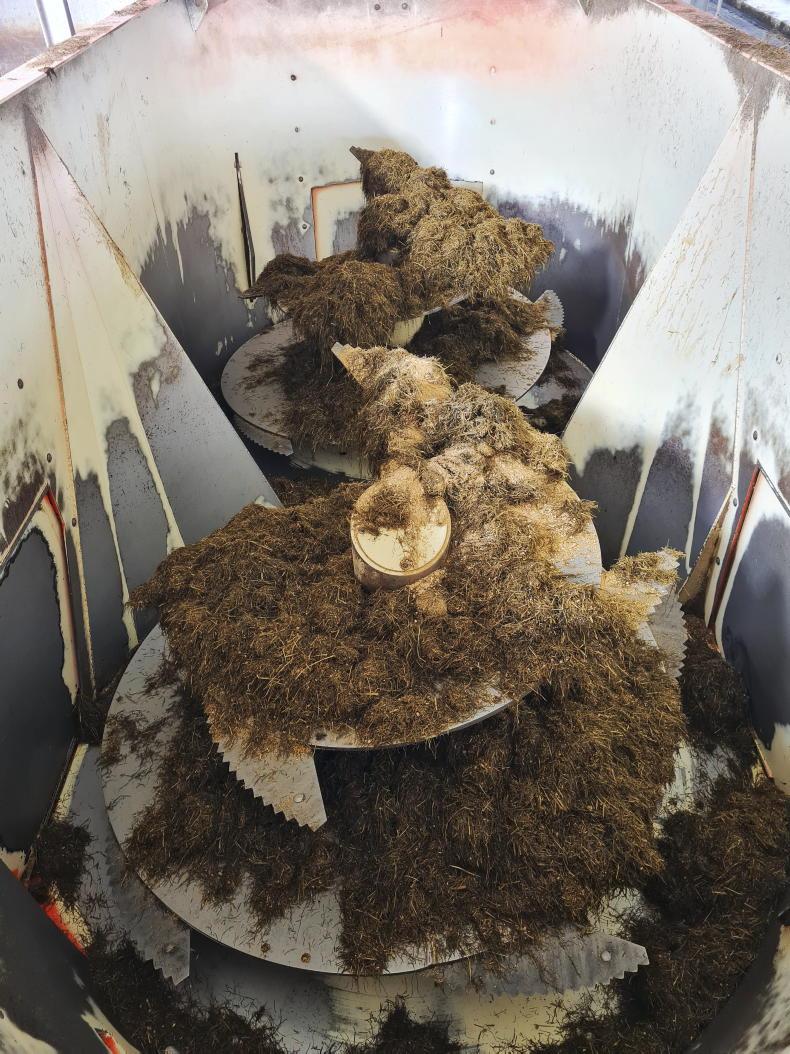
Machines over the years
He started off with a 12m3 Abbey single-tub machine, which was purchased secondhand. This was later upgraded to an 18m3 machine, followed again five years later by a new 21m3 machine. Two years ago, this unit was upgraded for a new VF 2100, which is another 21m3 Abbey feeder. The VF 2100 is a single-axle, twin-tub machine. After studying the price list and suitability of different machines, Bill noted that this machine proved to be the most cost-effective buy for his farm.
“A tandem-axle machine would work no problem on my farm and I’d have the horsepower to drive a larger machine, but I felt it wouldn’t justify the jump in price. The VF 2100 is the largest-capacity offering in a single-axle machine. The machine’s design and low height mean it’s easy to manoeuvre in narrow feed passageways and low sheds – it follows the tractor very well around the yard.
“The main reason I never went down the road of a horizontal paddle-type feeder was that I was afraid of how they would handle round-baled silage. I also thought they weren’t as compact as the vertical-type machine, although in fairness the paddle would probably be easier to drive and be a little easier on fuel,” he said. 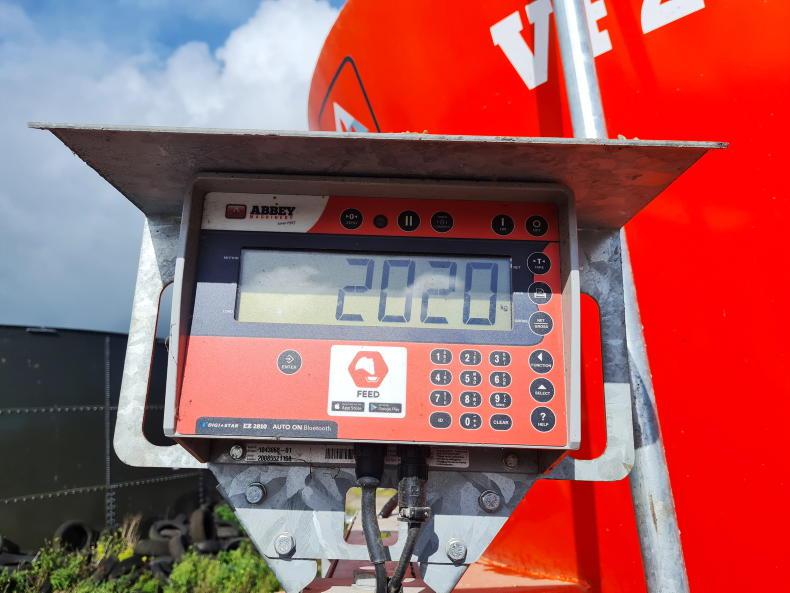
VF 2100
The VF 2100 is a twin-tub, 21m3 machine. The twin-auger vertical machine features 15mm augers with 16 serrated knives. All twin-auger Abbey machines feature the well-known Comer heavy-duty gear box and PTO shafts.
The machines come with a wide-angle PTO shaft (shear bolt protection) and a twin-speed gearbox, while the feeders’ side walls are constructed using 8mm steel.
“I feed 400 cattle annually with the machine from around November to February. This breaks down to approximately four loads per day over the winter feeding season. Typically, I’ve found a new set of knives will work away untouched for up to three seasons. It leaves the machine very much maintenance free, with the exception of regular greasing,” explained Bill.
“In a typical year, I feed predominately pit silage, 300-500 round bales of silage, 100-150 bales of 8x4x3 straw alongside a mix of beet, concentrates and minerals. The tub feeder is well able to handle the long fibrous material. The machine also comes with two counter knives which are engaged manually to further help with the chopping process if necessary,” added Bill.
Abbey uses Digi-Star electronic digital scales technology on its feeders. These scales feature a range of functions which allows a number of formulae for each ration to be stored. Weight is fed from the feeder to the scales via the four-point weighing system. To power the scales, the parking lights of the machine need to be switched on to supply power. 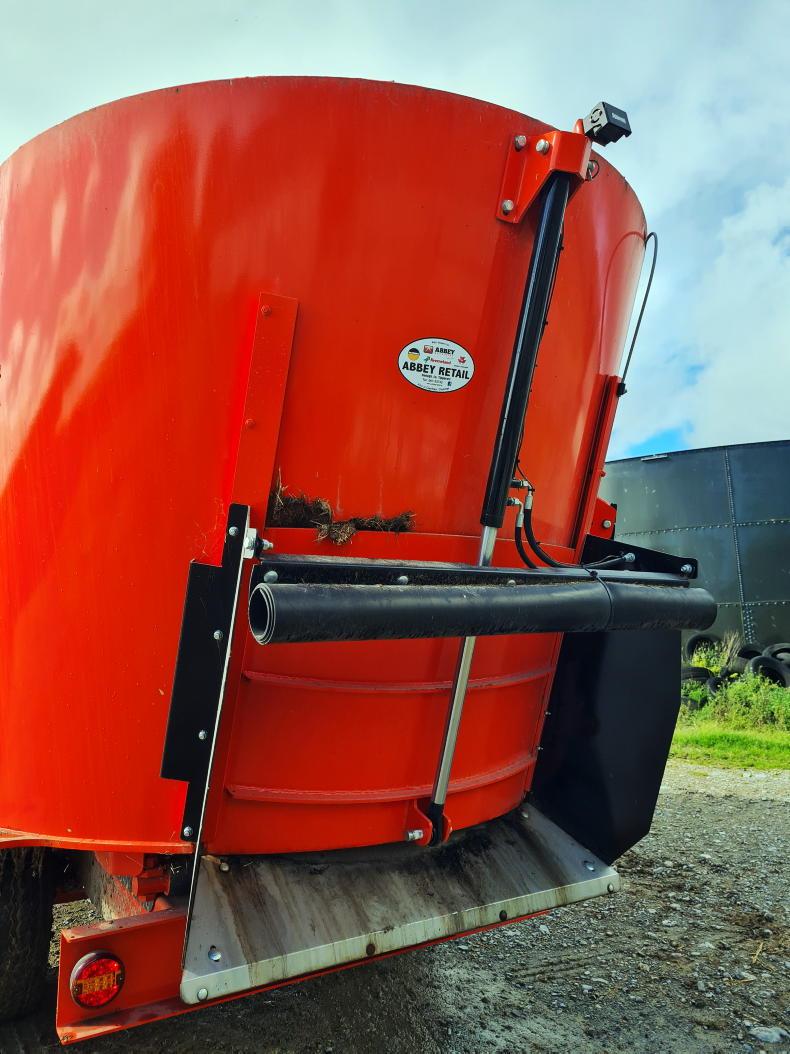
Discharge options
Many farmers around the country use diet feeders as a processing unit to mix rations. “The standard spec machine is plenty good enough for what I need, with the exception of the additional rear discharge door which I always opt for. I would have often mixed and pitted different mixes such as beet and soya hulls, or a cereal mix which would be shed stored,” added Bill.
All feeders come with the standard tray discharge system which is used to transfer the mix to the feed passage. These discharge doors are independently hydraulically operated. The second optional system is an elevator conveyor, which is used to feed the material into walled troughs or over barriers. The elevator’s height can also be controlled from the cab and can be set to suit the operator. The third option allows the machine to be used in ‘blind’ passages by feeding out through one or two rear doors, or to mix rations as Bill does. Other standard features include a viewing ladder and LED lighting.
Today, the Tipperary-based machinery manufacturer offers a total of 19 different feeder models, ranging from 8m3 to 33m3, with the twin tub range starting from 15m3. The VF 2100 twin-tub single-axle feeder comes with a starting price of €45,000 plus VAT. 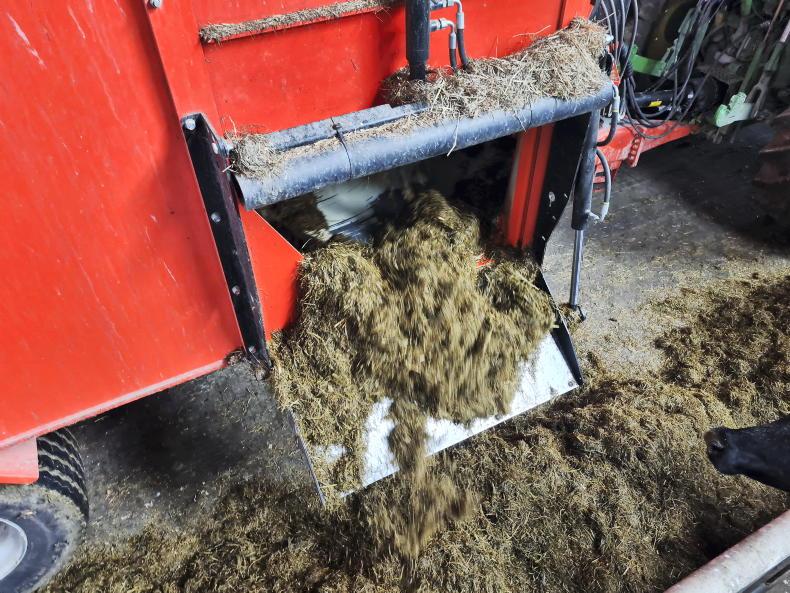
“I’m very happy with how the last two VF 2100 twin-tub machines have worked out for me. I can’t fault design or build quality with the Abbey feeders. The machine is robust and is well finished. I use a John Deere 6140M to drive the feeder. It does so at its ease, and according to its computer system, burns approximately 10 litres an hour during use which I think is very reasonable,” said Bill.
“In recent years I have gotten into the system of regularly upgrading the machine. I aim to be able to upgrade my feeder somewhere in the region of €5-€7/load. I find regularly upgrading the machine is working out very well. It means I have little to no input costs with the exception of the initial down payment. It also means I have a reliable machine with practically no downtime. If the figures continue to stack up, I will continue to change the machine quite often.”
Model: VF 2100.
Capacity: 21m3.
Auger: twin vertical auger.
Weight: 7,820kg.
Recommend horsepower: 125hp.
Length: 7.08m.
Height: 2.88m.
Width: 2.68m.
Wheels: 435/50 X 19.5.
Price: €45,000 plus VAT.
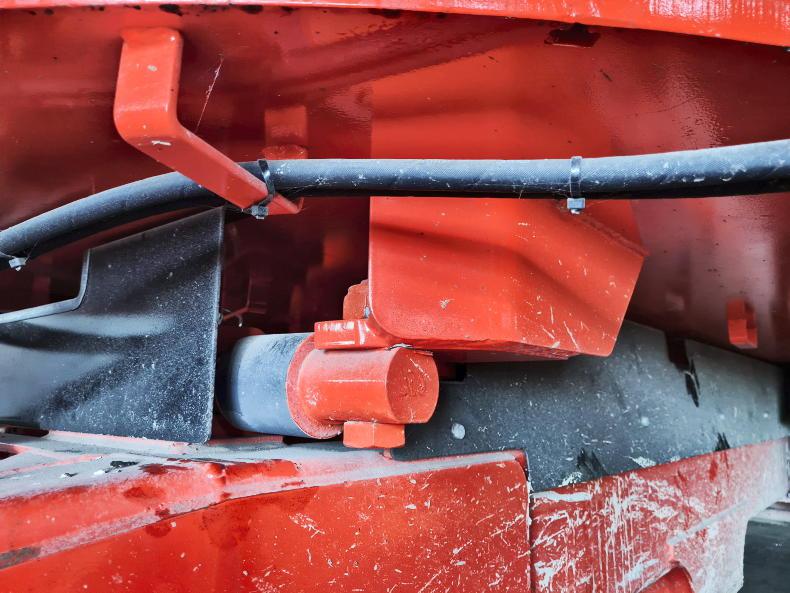


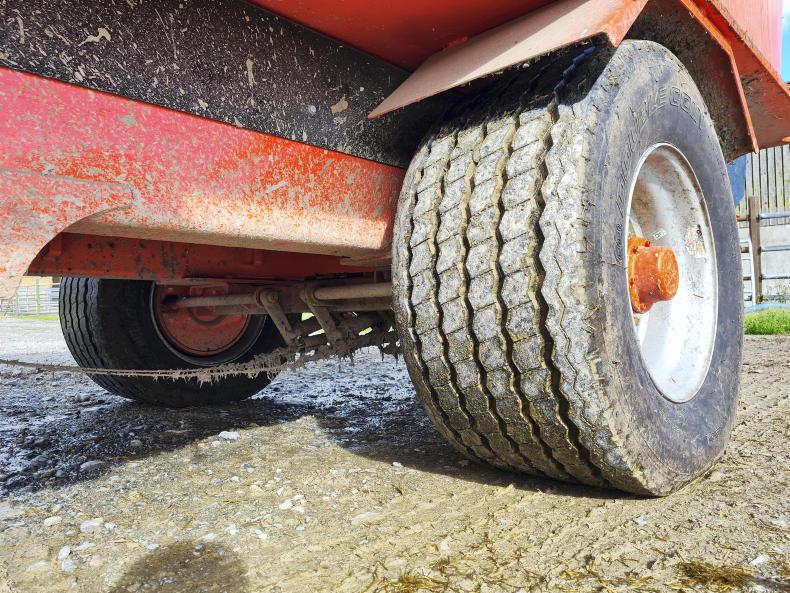

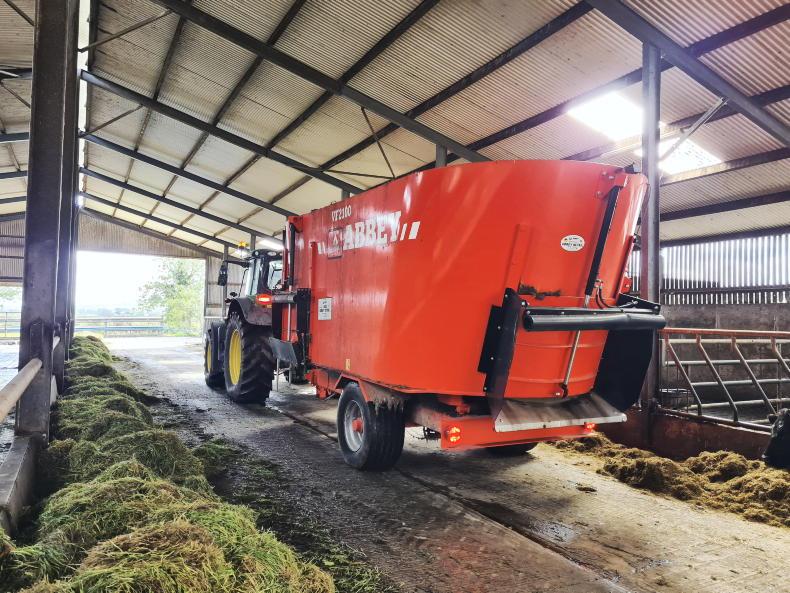
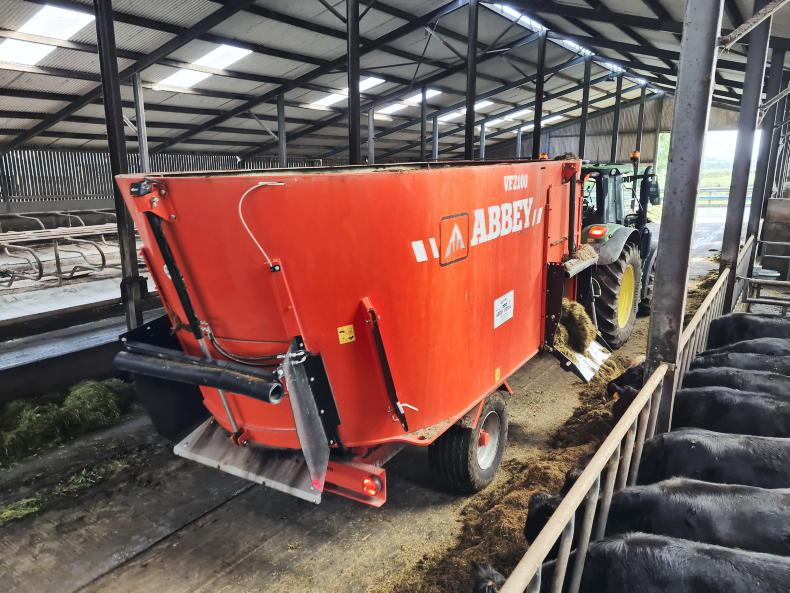
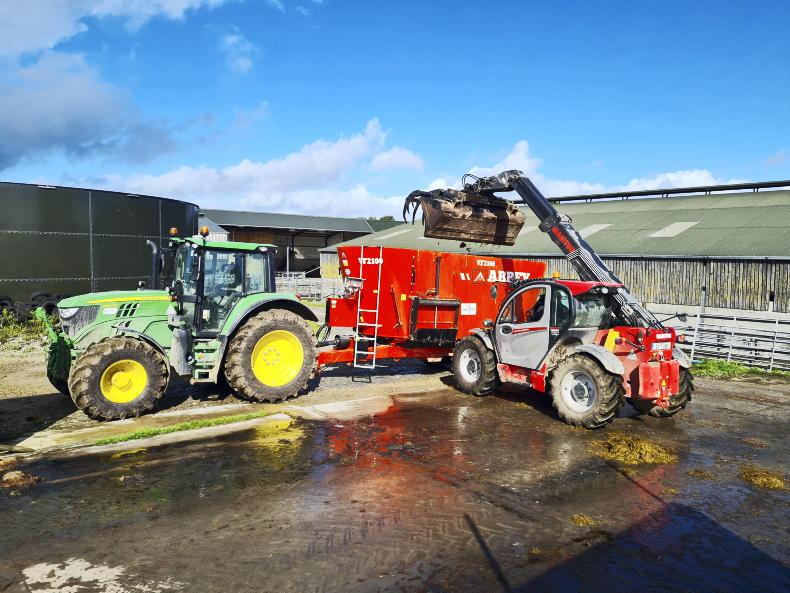






 This is a subscriber-only article
This is a subscriber-only article





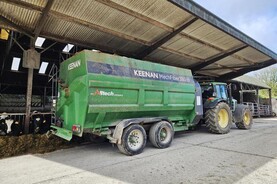




SHARING OPTIONS: